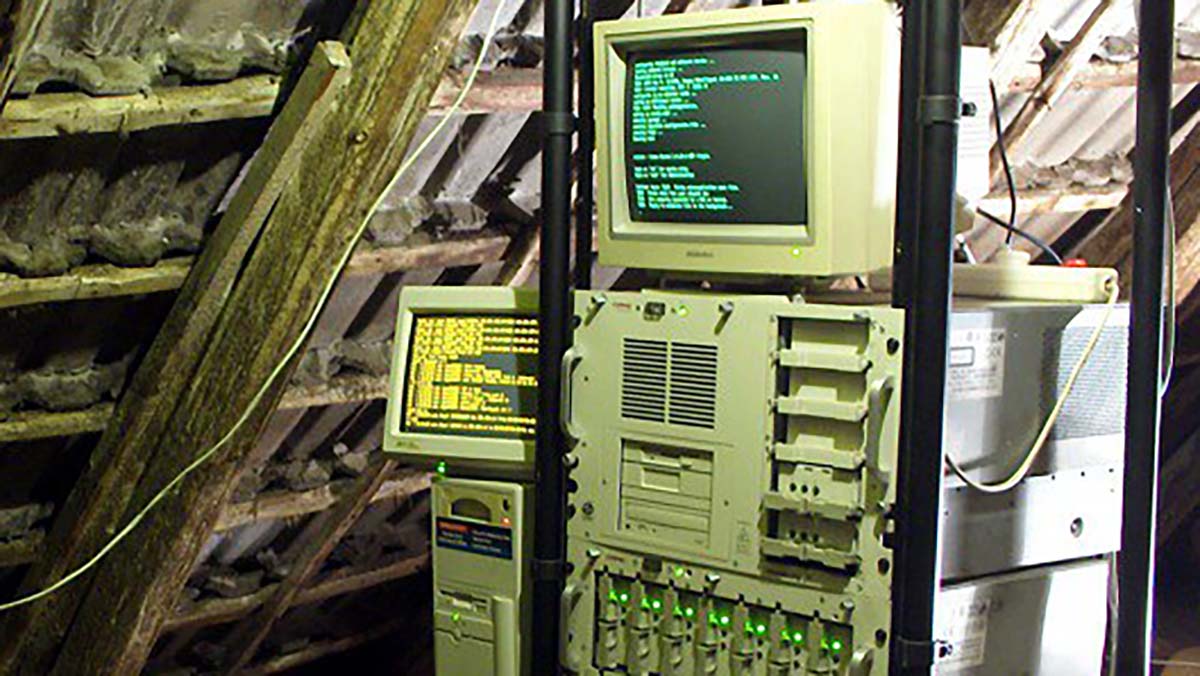Physical Address
304 North Cardinal St.
Dorchester Center, MA 02124
Physical Address
304 North Cardinal St.
Dorchester Center, MA 02124

Before Linux existed, there was Unix. This article goes through the history and evolution of the commands that today we consider the cornerstone of the Linux terminal experience.
Before Linux existed, there was Unix, initially developed in 1969 at Bell Labs (AT&T) by Ken Thompson, Dennis Ritchie, and others. Unix’s design philosophy was built around a few core principles:
By the early 1970s, Unix was being adopted in academic institutions, especially the University of California, Berkeley (leading to BSD Unix variants). The Unix userland tools (commands) introduced many fundamentals that still exist in Linux today.
Fun note: now you know why in the movie Tron the users have their own land.
These commands emerged from a culture of minimalistic design. Each was originally a small C program that accomplished a single task very efficiently. Furthermore, note that you can even tell they’re the earliest commands by their name alone. First, their names are two or three letters long, and also the names aren’t very descriptive. That’s because since there were only a handful of commands, the original developers thought that memorizing all of them wasn’t that big of a problem.
In the early 1980s, Richard Stallman launched the GNU Project (GNU stands for “GNU’s Not Unix”) to create a free Unix-like operating system. One of GNU’s main goals was to replace proprietary Unix utilities with free software.
ls, cp, mv, rm, chmod, and more, were rewritten under the GPL license.Stallman’s vision spurred a surge in free software development, laying the groundwork for the arrival of Linux.
When Linus Torvalds began developing the Linux kernel in 1991, he needed a set of userland tools to make the kernel actually useful to end-users. Instead of writing all of these from scratch, Linus and the wider community utilized the existing GNU project utilities. This blending of the GNU userland with the Linux kernel gave rise to the now-common term “GNU/Linux.” (and if you don’t write it like that Richard will come from under your bed!)
Most of the commands we use today in Linux trace their lineage through the GNU toolchain. Over the 1990s, more Linux distributions sprouted, each bundling the same core Unix-like commands but adding unique package managers, system initialization approaches (SysV init, later systemd), and user-space utilities.
Note: you can read the history of Linux and its distros following this link: The history and evolution of Linux distros.
As Unix flavors proliferated and the GNU tools gained traction, having a consistent standard became increasingly important. In the late 1980s to early 1990s, the Portable Operating System Interface (POSIX) standard was formalized to ensure compatibility across different Unix-like systems.
grep, awk, sed, vi) evolved to meet POSIX requirements while maintaining backward compatibility with traditional Unix flags and usage.Linux distributions typically aim for POSIX compliance while also incorporating extensions (e.g., GNU-specific options to commands like grep -P for Perl-compatible regex).
Though the core syntax of many Linux/Unix commands has remained remarkably stable, there have been some noteworthy expansions, extensions, and changes.
grep -P for PCRE support, --color for colorized outputls --color / ls -h for human-readable sizesawk evolved into gawk (GNU Awk), offering additional built-in functions and improvements over the original.sed has also seen feature expansions while keeping backward compatibility.ifconfig, route, and netstat are replaced or supplemented by ip from the iproute2 suite, offering a more modern approach to network configuration./etc/init.d/*) now give way to systemd commands (systemctl, journalctl, etc.), illustrating how system management commands shift as the underlying init system changes.apt, apt-get, dpkg, whereas Red Hat-based systems use dnf, yum, rpm. Arch Linux has pacman. This variety hints at how Linux commands co-evolve with distribution philosophies.Over time, Linux commands have not only been refined but also integrated with or augmented by new technologies, especially in cloud and container ecosystems.
docker, podman, and kubectl—while not part of the “traditional” Unix pantheon—are becoming ubiquitous in modern Linux environments.ansible, chef, and puppet automate tasks that previously relied heavily on manual or script-based usage of core commands.bash is still dominant, but shells liek zsh and fish have introduced user-friendly improvements (autocomplete, better scripting features, interactive suggestions).For a timeline of commands through time since the early 70s to the present days, see: The Linux Commands Timeline.
From the early days of Unix to the ever-evolving world of modern Linux distributions, the classic commands have not only stood the test of time but remain essential to both novices and power users. Their history is one of open standards, collaboration, and a shared philosophy that prioritizes small, composable tools.
While modern computing has moved toward containerization (not for nothing Docker is all the rage right now), continuous integration, and large-scale orchestration, it all still rests on the foundation of these timeless commands. Knowing where they come from (Bell Labs, BSD, GNU) and understanding how they’ve evolved (through POSIX, BusyBox, GNU extensions, and beyond) helps contextualize why they’re still so integral to day-to-day operations on servers and desktops around the globe and why you should at least have a modest understanding and knowledge of them
As equally important, the init systems that power Linux evolved drastically over the years along with the commands and the kernel itself. You can read more about it following this link: